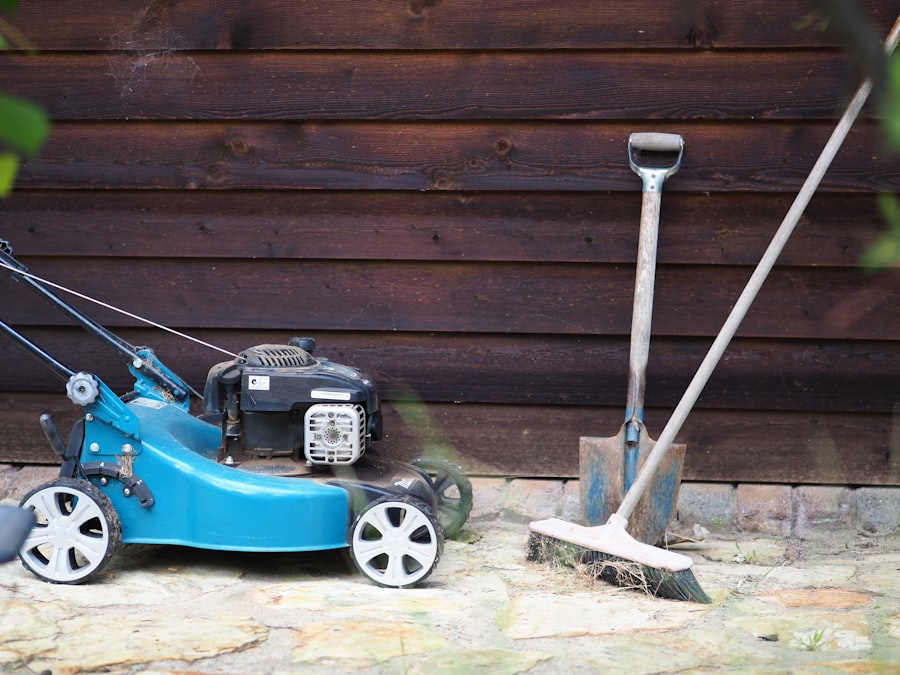Zone 5 Planting Guide: Tips for a Thriving Garden

Zone 5 refers to a specific climate zone in the United States and Canada, as defined by the USDA Plant Hardiness Zone Map. This zone is characterized by its cold winters and relatively short growing season. Despite these challenges, gardening in Zone 5 can be incredibly rewarding. There are many benefits to gardening in this zone, including the ability to grow a wide variety of plants, the opportunity to enjoy beautiful seasonal changes, and the chance to connect with nature.
One of the main benefits of gardening in Zone 5 is the wide range of plants that can be grown. While some plants may not survive the harsh winters, there are still plenty of options available. From colorful flowers to delicious vegetables, there is something for every gardener’s taste. Additionally, gardening in Zone 5 allows for the enjoyment of beautiful seasonal changes. The vibrant colors of fall foliage and the first signs of spring can be truly breathtaking.
Key Takeaways
- Zone 5 planting requires careful consideration of climate and plant selection
- Understanding your zone 5 climate is crucial for successful gardening
- Choosing the right plants for zone 5 involves selecting hardy, cold-tolerant species
- Soil preparation is key for zone 5 planting, including testing and amending soil as needed
- Planting techniques for zone 5 gardens should take into account frost dates and weather patterns
Understanding Your Zone 5 Climate
Zone 5 is characterized by its cold winters and relatively short growing season. The average annual minimum temperature in this zone ranges from -20°F to -10°F (-28.9°C to -23.3°C). The average annual maximum temperature ranges from 0°F to 10°F (-17.8°C to -12.2°C). The average annual precipitation in Zone 5 is around 20 to 30 inches (50.8 to 76.2 cm).
Frost dates are an important consideration for gardeners in Zone 5. The last frost date typically occurs in late April or early May, while the first frost date occurs in late September or early October. These dates can vary slightly depending on your specific location within Zone 5.
Choosing the Right Plants for Zone 5
Choosing plants that are suitable for Zone 5 is crucial for successful gardening. It’s important to select plants that can tolerate the cold temperatures and short growing season. Some examples of plants that thrive in Zone 5 include:
– Perennials: Coneflowers, daylilies, hostas, and peonies are all popular choices for Zone 5 gardens. These plants are hardy and can withstand the cold winters.
– Shrubs: Lilacs, hydrangeas, and spirea are all beautiful shrubs that can thrive in Zone 5. They provide color and interest to the garden throughout the year.
– Vegetables: Cold-hardy vegetables like kale, spinach, carrots, and radishes are great choices for Zone 5 gardens. They can be planted early in the season and harvested before the first frost.
Soil Preparation for Zone 5 Planting
| Soil Preparation for Zone 5 Planting | Metric | Value |
|---|---|---|
| Soil Testing | pH Level | 6.0-7.0 |
| Nutrient Levels | Optimal | |
| Organic Matter | 3-5% | |
| Tilling | Depth | 6-8 inches |
| Frequency | Once per year | |
| Composting | Ratio | 3:1 (brown:green) |
| Application | 2-3 inches on top of soil |
Proper soil preparation is essential for successful gardening in Zone 5. The first step is to test your soil to determine its pH level and nutrient content. This will help you determine if any amendments are needed. In general, Zone 5 soils tend to be slightly acidic, so adding lime may be necessary to raise the pH.
Improving soil quality is also important in Zone 5. Adding organic matter, such as compost or well-rotted manure, can help improve soil structure and fertility. It also helps with moisture retention, which is especially important in areas with low rainfall.
Planting Techniques for Zone 5 Gardens
When it comes to planting in Zone 5 gardens, there are a few best practices to keep in mind. First, it’s important to plant at the appropriate time. Start seeds indoors or purchase transplants that are suitable for your specific planting zone. Planting too early can result in frost damage, while planting too late may not give plants enough time to mature before the first frost.
Spacing is another important consideration when planting in Zone 5 gardens. Proper spacing allows plants to receive adequate sunlight and air circulation, which helps prevent disease and promotes healthy growth. Be sure to follow the spacing recommendations provided on seed packets or plant labels.
Watering and Fertilizing Tips for Zone 5 Plants

Proper watering and fertilizing are essential for the health and vitality of plants in Zone 5 gardens. It’s important to water plants deeply and infrequently, rather than giving them frequent shallow waterings. This encourages deep root growth and helps plants withstand periods of drought.
Fertilizing is also important in Zone 5 gardens. Applying a balanced fertilizer in early spring can help provide plants with the nutrients they need for healthy growth. It’s important to follow the recommended application rates and timing provided on the fertilizer packaging.
Pest and Disease Management in Zone 5 Gardens
Zone 5 gardens are not immune to pests and diseases. Some common pests in this zone include aphids, slugs, and Japanese beetles. To prevent pest infestations, it’s important to practice good garden hygiene by removing dead plant material and keeping the garden clean.
Disease management is also important in Zone 5 gardens. Common diseases in this zone include powdery mildew, leaf spot, and blight. To prevent disease, it’s important to provide adequate air circulation by spacing plants properly and avoiding overhead watering.
Seasonal Maintenance for Zone 5 Plants
Seasonal maintenance is an important part of gardening in Zone 5. In the spring, it’s important to remove any winter mulch and clean up any debris that may have accumulated over the winter. This helps prevent disease and allows plants to receive adequate sunlight.
In the summer, regular watering and weeding are essential. It’s also a good time to deadhead flowers and prune any overgrown shrubs or trees.
In the fall, it’s important to clean up any fallen leaves and remove any dead or diseased plant material. This helps prevent the spread of disease and prepares the garden for winter.
Creative Garden Design Ideas for Zone 5
Designing a beautiful and functional garden in Zone 5 is all about creativity and planning. One idea is to incorporate different elements into your garden design, such as paths, seating areas, and water features. These elements can add interest and create a sense of tranquility.
Another idea is to create different garden “rooms” within your space. This can be done by using hedges, trellises, or other structures to create separate areas for different purposes, such as a vegetable garden, a flower garden, or a relaxation area.
Benefits of Zone 5 Gardening for the Environment and Your Health
Gardening in Zone 5 has many benefits for both the environment and your health. From an environmental perspective, gardening helps reduce carbon emissions by sequestering carbon dioxide from the atmosphere. It also helps conserve water by promoting healthy soil that retains moisture.
From a health perspective, gardening provides physical activity and stress relief. It also allows you to grow your own food, which can be more nutritious and flavorful than store-bought produce.
In conclusion, gardening in Zone 5 can be incredibly rewarding. Despite the challenges of cold winters and a short growing season, there are many benefits to gardening in this zone. By understanding your climate, choosing the right plants, preparing your soil, and practicing proper planting techniques, you can create a beautiful and thriving garden in Zone 5. So why not start a Zone 5 garden today and enjoy the beauty of nature right in your own backyard?
If you’re looking for more information on planting in Zone 5, be sure to check out Lawn World’s comprehensive planting guide. This helpful resource provides valuable insights and tips on selecting the right plants, understanding soil conditions, and maintaining a healthy garden in Zone 5. For a complete overview of all the articles available, you can visit Lawn World’s sitemap. Happy gardening!
FAQs
What is Zone 5?
Zone 5 is a plant hardiness zone designated by the United States Department of Agriculture (USDA) based on the average minimum winter temperature. It includes areas with a minimum temperature range of -20 to -10 degrees Fahrenheit.
What types of plants are suitable for Zone 5?
There are many plants that are suitable for Zone 5, including perennials, annuals, shrubs, and trees. Some popular options include tulips, daffodils, daylilies, hostas, hydrangeas, lilacs, and maples.
When is the best time to plant in Zone 5?
The best time to plant in Zone 5 is typically in the spring after the last frost or in the fall before the first frost. This allows plants to establish their roots before the extreme temperatures of winter or summer.
What soil conditions are best for planting in Zone 5?
The ideal soil conditions for planting in Zone 5 are well-draining soils with a pH between 6.0 and 7.0. Adding organic matter such as compost or aged manure can improve soil structure and fertility.
How often should I water my plants in Zone 5?
The frequency of watering in Zone 5 depends on the type of plant and the weather conditions. Generally, plants should be watered deeply once a week during dry spells. It is important to avoid overwatering, as this can lead to root rot.
What are some common pests and diseases in Zone 5?
Common pests in Zone 5 include aphids, spider mites, and Japanese beetles. Diseases such as powdery mildew and blight can also affect plants. Proper plant selection, good cultural practices, and timely treatment can help prevent and control these issues.



